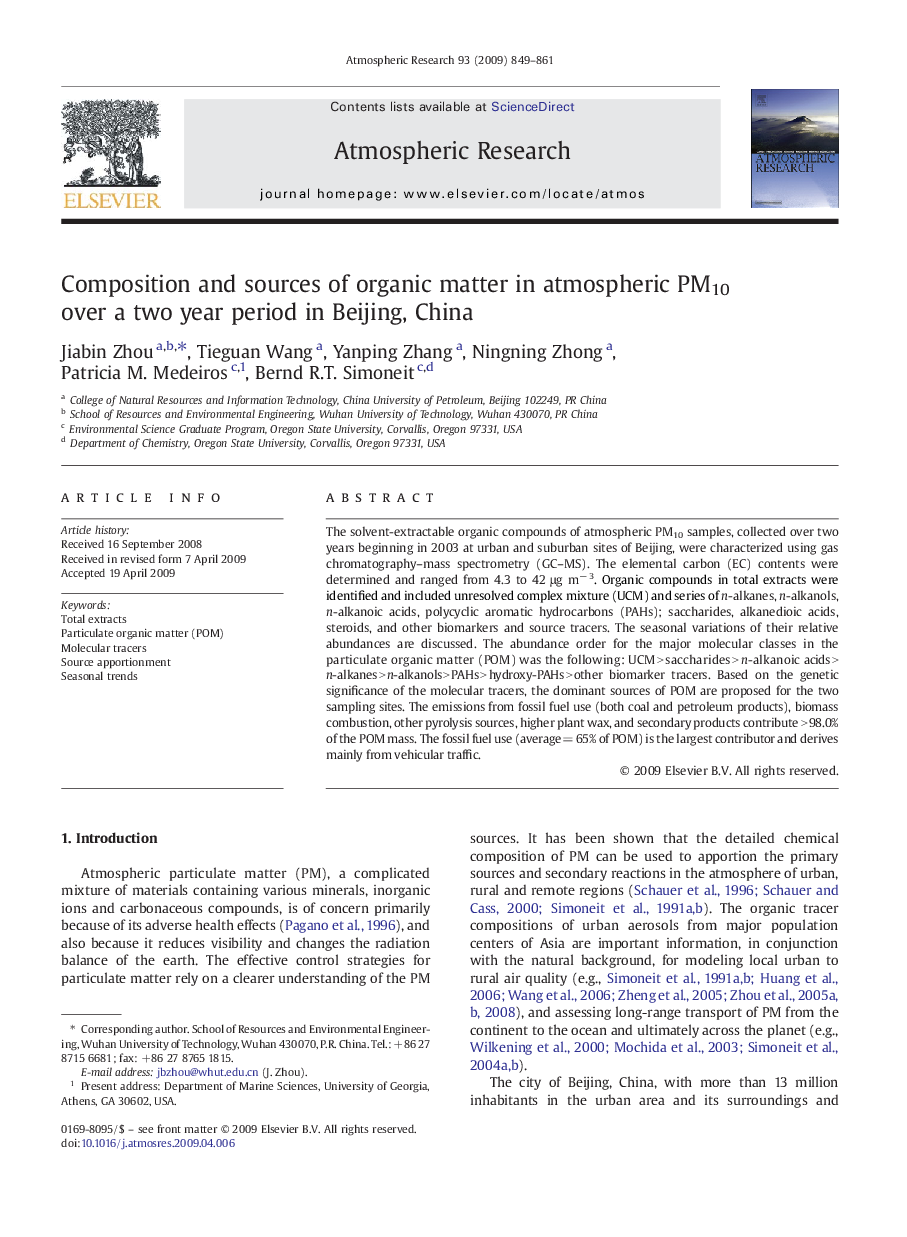| Article ID | Journal | Published Year | Pages | File Type |
|---|---|---|---|---|
| 4450960 | Atmospheric Research | 2009 | 13 Pages |
The solvent-extractable organic compounds of atmospheric PM10 samples, collected over two years beginning in 2003 at urban and suburban sites of Beijing, were characterized using gas chromatography–mass spectrometry (GC–MS). The elemental carbon (EC) contents were determined and ranged from 4.3 to 42 μg m− 3. Organic compounds in total extracts were identified and included unresolved complex mixture (UCM) and series of n-alkanes, n-alkanols, n-alkanoic acids, polycyclic aromatic hydrocarbons (PAHs); saccharides, alkanedioic acids, steroids, and other biomarkers and source tracers. The seasonal variations of their relative abundances are discussed. The abundance order for the major molecular classes in the particulate organic matter (POM) was the following: UCM > saccharides > n-alkanoic acids >n-alkanes > n-alkanols > PAHs > hydroxy-PAHs > other biomarker tracers. Based on the genetic significance of the molecular tracers, the dominant sources of POM are proposed for the two sampling sites. The emissions from fossil fuel use (both coal and petroleum products), biomass combustion, other pyrolysis sources, higher plant wax, and secondary products contribute > 98.0% of the POM mass. The fossil fuel use (average = 65% of POM) is the largest contributor and derives mainly from vehicular traffic.
